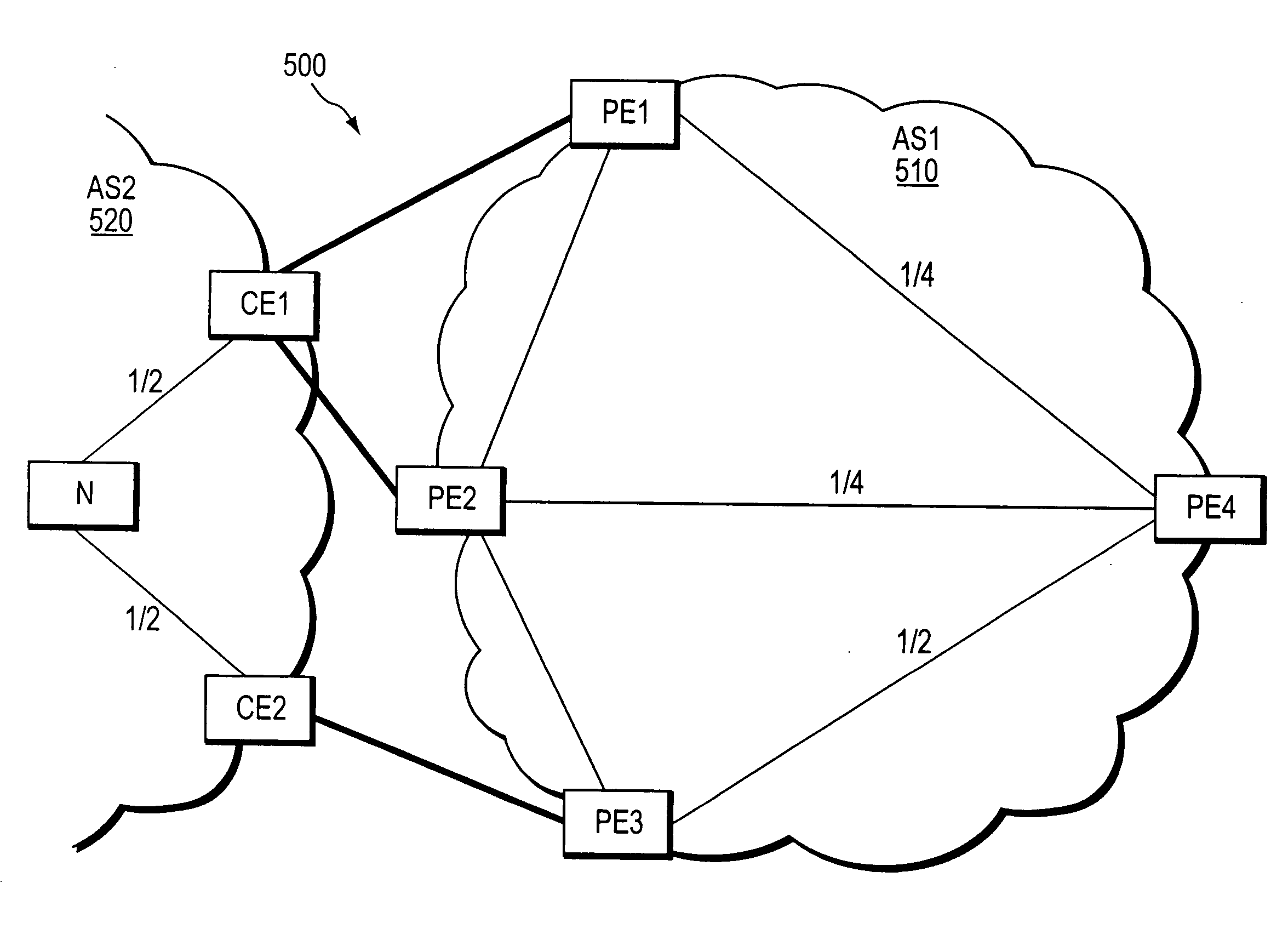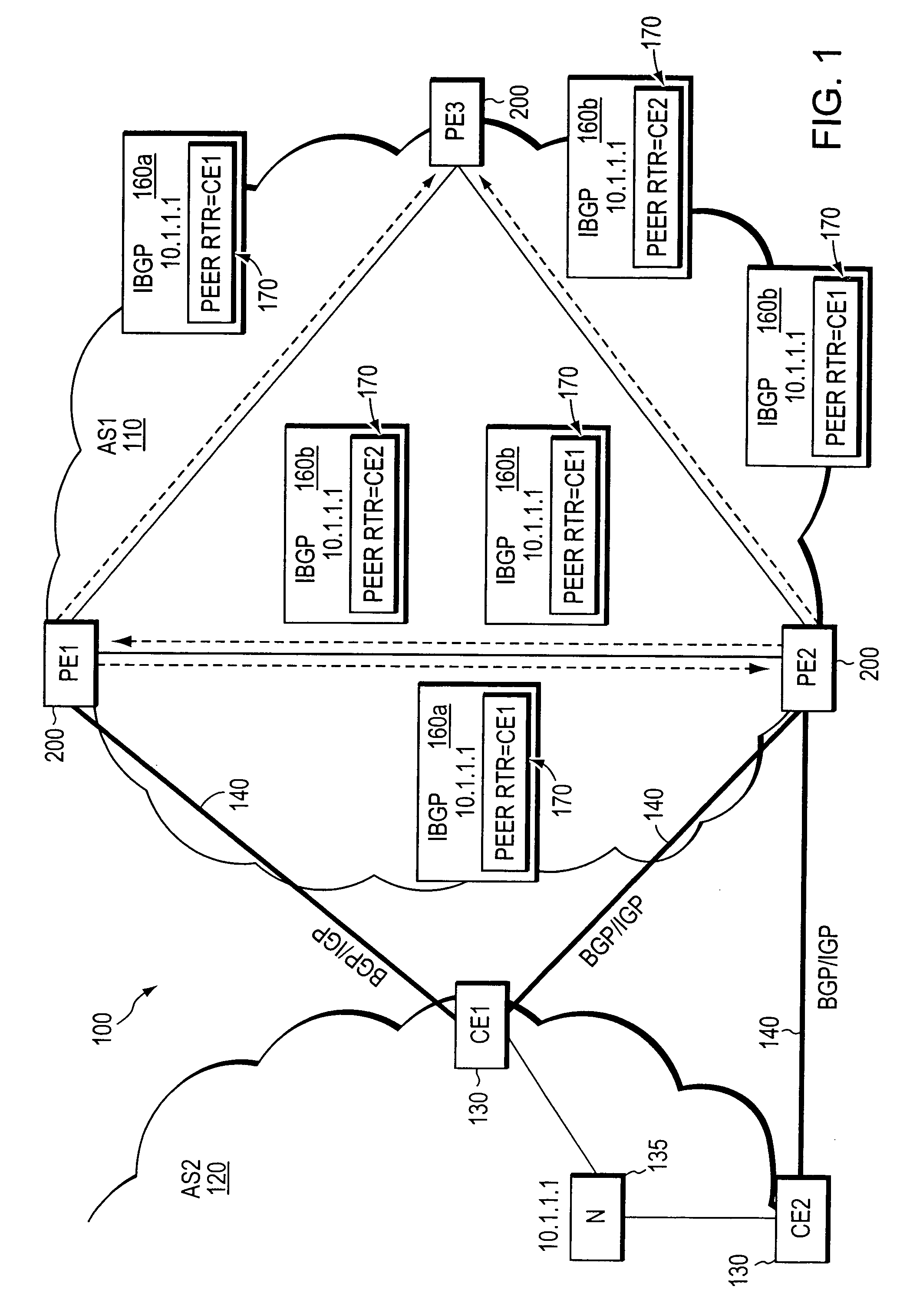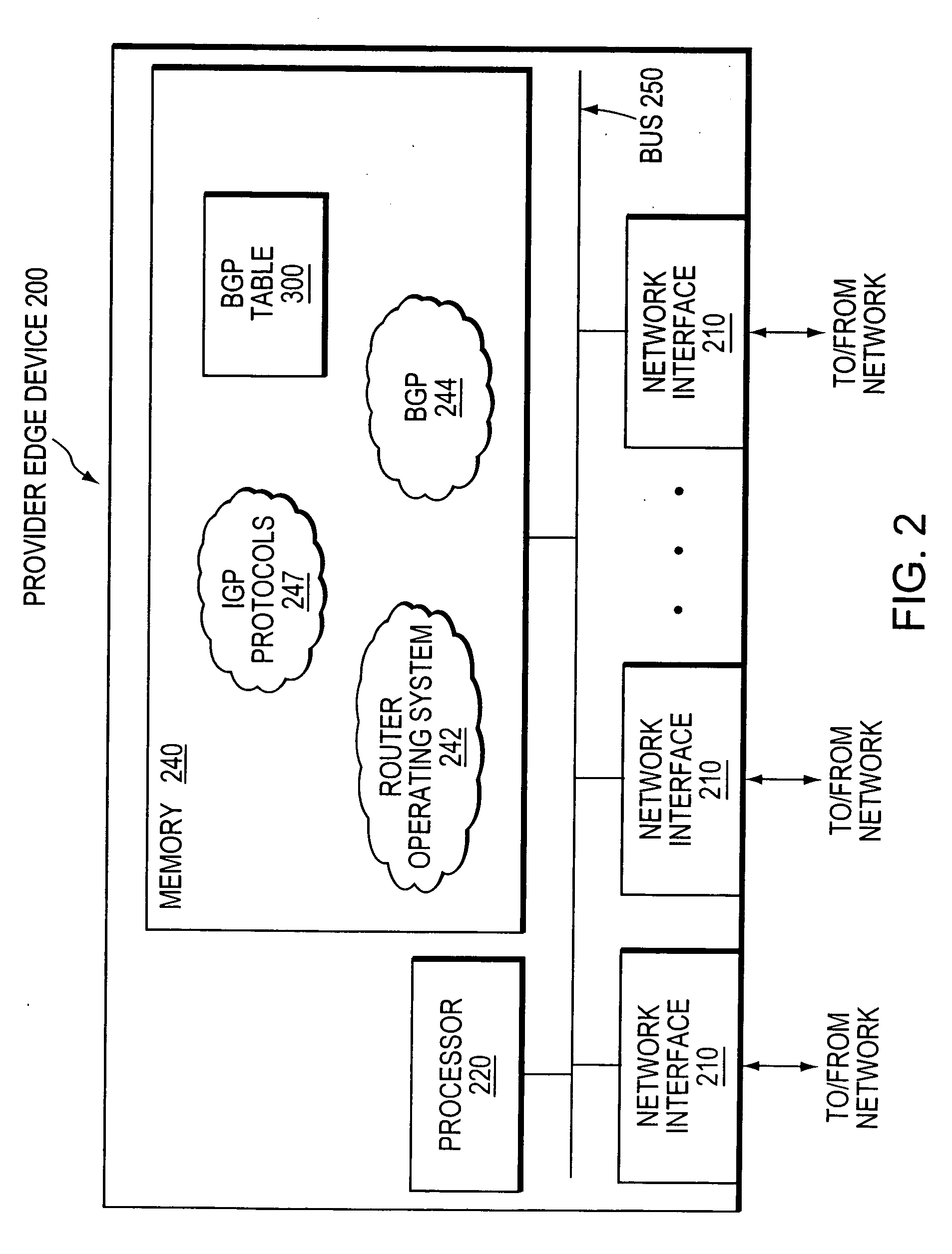Dynamic shared risk node group (SRNG) membership discovery
a dynamic and risk node technology, applied in the field of computer networks, can solve the problems of inability of each link whose data packets are transported using that shared resource, inability to use static srng configuration, excessive time-consuming manual srng configuration, etc., and achieves fast and efficient identification, the effect of updating faster and more efficiently
- Summary
- Abstract
- Description
- Claims
- Application Information
AI Technical Summary
Benefits of technology
Problems solved by technology
Method used
Image
Examples
Embodiment Construction
[0024]FIG. 1 illustrates an exemplary computer network 100 including a service provider network 110 (AS1) coupled to a neighboring customer site 120 (AS2). The provider network is preferably managed as BGP or Multi-Protocol Label Switching (MPLS) virtual private network (VPN) network, as generally described in the IETF publication RFC 2547, entitled BGP / MPLS VPNs, by E. Rosen et al., published March 1999, which publication is hereby incorporated by reference as though fully set forth herein. Data packets are forwarded between nodes in the provider network 110 using, e.g., the IP and / or MPLS protocols, and routing information is exchanged among the intermediate network nodes using an interior gateway routing protocol (IGP), such as OSPF or IS-IS.
[0025] The provider network 110 includes a plurality of provider edge (PE) devices 200, such as the edge devices PE1, PE2 and PE3. The PE devices are fully meshed at the BGP level. That is, each PE device in the provider network can communic...
PUM
 Login to View More
Login to View More Abstract
Description
Claims
Application Information
 Login to View More
Login to View More - R&D
- Intellectual Property
- Life Sciences
- Materials
- Tech Scout
- Unparalleled Data Quality
- Higher Quality Content
- 60% Fewer Hallucinations
Browse by: Latest US Patents, China's latest patents, Technical Efficacy Thesaurus, Application Domain, Technology Topic, Popular Technical Reports.
© 2025 PatSnap. All rights reserved.Legal|Privacy policy|Modern Slavery Act Transparency Statement|Sitemap|About US| Contact US: help@patsnap.com



